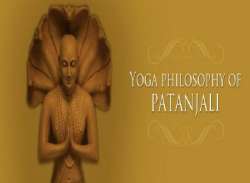Modern Yoga is a misunderstanding: How Yoga’s essence changed across time
The world understands Yoga today mainly as a system of physical exercise. Modern yoga is the offspring of 'Hatha' yoga, which we can break down as ‘ha’- the sun and ‘th’-the moon. It is the yoga of balance and harmony in the body-mind, just as the sun and moon balance nature.

The world understands Yoga today mainly as a system of physical exercise. Modern yoga is the offspring of 'Hatha' yoga, which we can break down as ‘ha’- the sun and ‘th’-the moon. It is the yoga of balance and harmony in the body-mind, just as the sun and moon balance nature. The father of modern yoga is T. Krishnamacharya, whose students, Pattabhi jois, B. K. S. Iyengar were its stalwart proponents, instrumental in spreading it far and wide across the western world.
However, Yoga has existed long before the birth of the highly physical version of our modern times.
- The Veda Agamas, which some believe to be pre-Vedic, mention it in their 'Yoga-pada'. The Vedas themselves are certainly seven thousand years old, at least. Agamas are the experimental physics to the theoretical physics of Vedas. Tirumular, a famous saint is believed to have said, "If Vedas are the path, Agamas are the horse".
- It was Patanjali who organised and codified Yoga separately for the first time somewhere between the 4000BC to 1000BC. Even the Moksha sutras of Mahabharata which date back to 4000BC mention it. The funny thing is that Patanjali mentions just one basic seated position or 'asana'. This is because the crux of Yoga is not proficiency in asanas, but samadhi or absorption. Samadhi leads to the end goal of Yoga which we call enlightenment, but it really means transcending our human limitations to become a powerful ultra-human. The end goal of Yoga is a specie mutation to a higher state of existence. Of perceiving the universe better and interacting with it with greater power. To feel with extra senses, know with the extra-mind.
- Goraksha Nath of the Nath sampradaya codified it once again in his book, Goraksha Samhita. Not surprisingly, he mentioned 84 asanas, but explained only two.
- It was only with the birth of Hatha Yoga that the focus on the physical aspect of asanas increased. Swami Svatmarana of the Nath Sampradaya wrote the Hatha Yoga Pradipika, considered as the manual of modern Hatha Yoga, between 15,000 AD- 17,000 AD. Even he mentioned just 15 asanas.
The Yoga asanas which have taken the world by a storm in the 20 and 21st centuries are called the Asthanga style of yoga. It comes from Astanga Vinyasa Yoga, a child of Hatha yoga. Pattabhi Jois codified and popularised it across the western world. Sadly, it is a misnomer. Here’s how:
1. In sanskrit, 'ashta' is eight and 'anga' is a limb. Eight limbed was actually the characteristic of the science of yoga as described by Patanjali. He outlined Yoga as a progressive, organic biological software that runs in our system to evolve us into ultra-humans. It has eight principles, four external and four internal.
2. The four external principles are preliminary preparations, calibrations of the body and mind to achieve the four inner states, ending in samadhi. Asana is one of the four principles of calibration and adjustment of the body-mind. It does not have a critical impact on the end state or end goal of yoga because many saints became enlightened without being asana masters.
Over 300 million people practise yoga, but we hardly hear talk of radical transformation or enlightenment. Practising asana and that alone will probably make me an asana champion, but not an accomplished Yogi. Asana is for achieving balance in the body-mind for holding deep meditative states, to make samadhi happen easier and faster. End of story.
Hence Yoga asanas are a means to and end, not the end itself. We must not forget this truth as we practise Yoga this Yoga day.